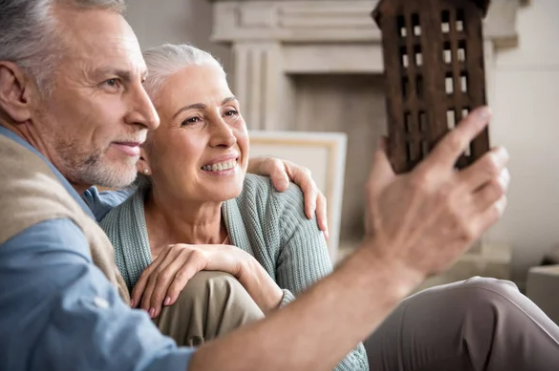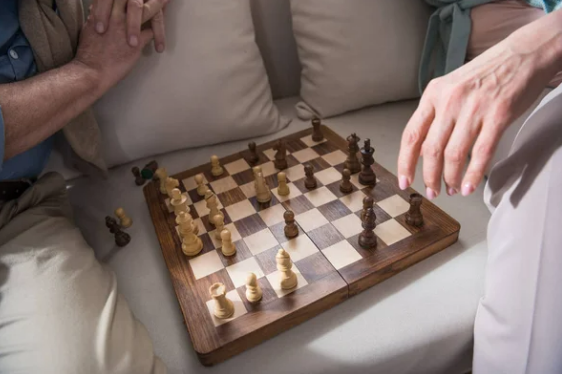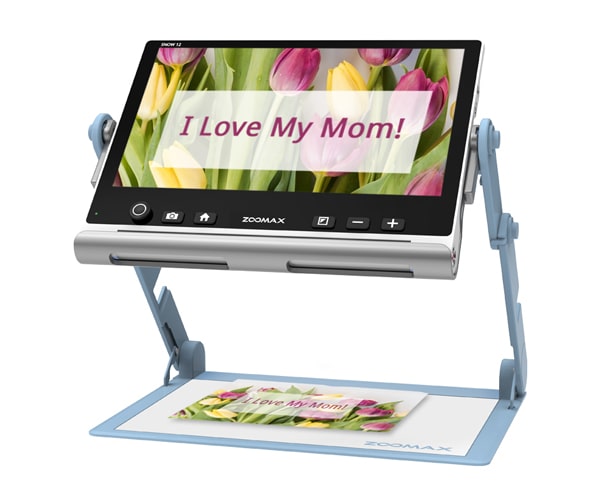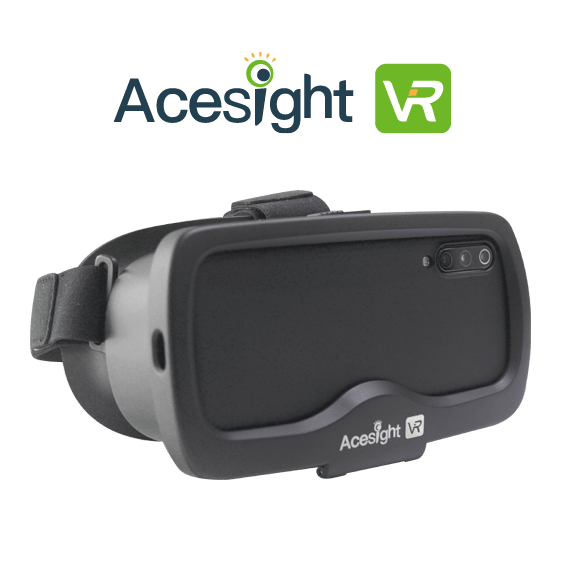As for 2015, approximately 253 million people (3.4%) are classified with distance visual impairments globally, of whom 36 million are blind and 217 million suffer severe impairments[1] (visit http://atlas.iapb.org/gvd-maps for updated estimates of number of people affected by vision loss).
[1] https://doi.org/10.1136/bjophthalmol-2018-312292
Causes of Visual Impairments

There are multiple reasons for visual impairmentss. Most causes are related to disease, such as cataracts, glaucoma, diabetic retinopathy, etc., and occasionally blindness occurs at birth, in childhood or after. Aging also has an effect on the visual system, leading to some degree of visual impairment, such as age-related macular degeneration (AMD), cataracts, chronic open-angle glaucoma, herpes zoster ophthalmicus, common external eye disorders in older people, etc.
Social Isolation Caused by Visual Impairments
Social relationships are essential for maintaining individuals’ physical and psychological well-being. Social isolation is an objective and quantifiable reflection of reduced social network size and paucity of social contact, which would be understood as a common cause of loneliness. Investigators have found that people with visual impairments including both partial sight and blindness (especially those with impaired sight in early life) are not able to observe social interactions directly. They tend to lack a considerable amount of social interactions and the ability of staying connected with their family and the world, which may cause adverse effects on individual development. In other words, social deficits caused by the low vision may lead to social isolation, low self-esteem, and poor psychological well-being[1].
[1] https://doi.org/10.1515/pcssr-2015-0001
Health Concerns Caused by Visual Impairment

Loneliness and Depression
Recent studies have found that being visually impaired relates to individuals’ social and emotional loneliness. To be specific, compared to people without visual impairments, visually impaired people reported significantly more loneliness and social isolation, and possibly due to their disrupted social participation, they had less social support available[1][2].
In addition, studies on people with low vision show a higher risk of being diagnosed as clinically depressed than their sighted counterparts. Due to inaccessible environments and the stigma associated with being visually impaired or blind, many of them fail to seek professional help which leads to a large proportion of this population being untreated[3].
[1] https://pubmed.ncbi.nlm.nih.gov/23530191/
[2] https://doi.org/10.1111/ajag.12379
[3] https://doi.org/10.1186/s12888-020-02652-7
Individuals’ social and emotional loneliness. To be specific, compared to people without visual impairments, visually impaired people reported significantly more loneliness and social isolation, and possibly due to their disrupted social participation, they had less social support available (Steptoe et al., 2013; Wright-St Clair et al., 2017).
In addition, studies on people with low vision show a higher risk of being diagnosed as clinically depressed than their sighted counterparts. Due to inaccessible environments and the stigma associated with being visually impaired or blind, many of them fail to seek professional help which leads to a large proportion of this population being untreated (Brunes & Heir, 2020).
Other Diseases
Individuals with vision loss are more likely to suffer from other health problems. Investigators have found that loneliness has been linked with various diseases, such as the risk of cardiovascular disease and mortality, elevated blood pressure and cortisol, hypertension, coronary artery disease, Alzheimers (and other forms of dementia), etc[1][2].
[1]https://pubmed.ncbi.nlm.nih.gov/23530191/
[2] https://www.seniorlifestyle.com/resources/blog/the-mental-health-benefits-of-socializing-for-seniors/
Promoting Socialization for Visually Impaired People

As the socialization process is strongly influenced by daily living skills, recreational activity, and competitive sports experiences, physical activity actually plays a crucial role in psychosocial development and physical health[1].
[1] https://doi.org/10.1016/j.ridd.2010.08.013
Benefits of Socialization For Visually Impaired People
Visual impairments can act as a limitation and slow down the acquisition of motor skills, but if visually impaired people have a sufficient level of participation in physical activity, they are likely to have better motor skills[1]. Recent studies indicate that visually impaired individuals who are encouraged to participate in sports will have a better opportunity of grasping more social skills in life, and that further lead to the development of their personality and sense of self[2]. In other words, individuals with visual losses should be given the opportunity and encouraged to do some physical activity in a safe environment, and participation in activities such as dance, yoga, movement education, and any age-appropriate activity can be an excellent means to promote socialization in visually impaired people.
[1] https://collegepdf.com/product/adapted-physical-education-and-sport-6th-edition-ebook-pdf/
[2] https://doi.org/10.1016/j.ridd.2010.08.013
Suggestions for Physical Activities For Visually Impaired People
A number of studies indicate that involvement in many activities of daily living for persons with sight loss is affected by support from family or friends, the availability of current low vision aids (LVA), assistive solutions, and potential coping mechanisms. For a child who is visually impaired or blind, parents or teachers should explain all visual information clearly while providing it to their peers, if the child is expected to keep up with cognitive and social information[1]. For those who have lost their sight due to age or disease, LVAs, assistive solutions, encouragement and companionship from family members, and professional institutions are equally important. Some points should be considered in advance.
[1] https://collegepdf.com/product/adapted-physical-education-and-sport-6th-edition-ebook-pdf/
Ensure safety For Visually Impaired People
First and foremost, the safety of the exercise and environment needs to be considered carefully. Safety is the priority because people with visual impairments demonstrate less developed motor skills and poor body image and balance. Therefore, it is important to accomplish this both through instruction in physical education and through collaboration with parents and other caregivers: design fitness programs for people with visual impairments, work with families to find fitness activities that they enjoy at home and in the community, and ensure the security of the visually impaired people[1].
[1] https://collegepdf.com/product/adapted-physical-education-and-sport-6th-edition-ebook-pdf/
Design Curriculum in Advance
The design and schedule of curriculum and programming for them should be done carefully. Some scholars suggest that for teenagers with visual impairments, physical programs should include a mix of open and closed sports. Open sports have frequently changing variables, such as tennis, volleyball, soccer, lacrosse, etc. Closed sports are consistent and predictable, like, bowling, shot put, and discus. Activities such as running, swimming, wrestling, judo, and bowling should also be included.
Choose Appropriate Low Vision Aids For Visually Impaired People
Many assistive technologies and low vision aids (LVAs) have been applied to assist individuals with visual impairments. To be specific, for people with some degree of functional vision, hand-held video magnifiers can help them see objects up close or at a distance; wearable visual aids can help them to continue seeing well enough to play sports, partying and socializing; for those with no vision, screen readers with synthesized speech function can better support them in reading-related daily activities.
However, lack of understanding of LVAs among people challenges the actual needs of those living with sight loss, and it should be borne in mind that choosing an appropriate visual aid is no less important than enough instruction and practice time to learn movements and fit the device. According to the recent review, factors leading to low vision aids device abandonment included devices being too heavy, taking up too much space, impractical for handling, limited technical performance, insufficient magnifying power, time-consuming operation, etc. These factors should be taken into account when selecting suitable equipment for visually impaired people, and we should choose equipment that are more closely suits user requirements and provides substantial benefit.
Low Vision Aids Recommendation for Visually Impaired people
Wearable assertive technologies, like wearable VR electronic glasses or panoramic view smart glasses, are some of the best ways for people with sight loss who want to do physical activities and networking events. Handheld or portable electronic video magnifiers are portable and easy to use and desktop-stand magnifiers can prop themselves up on a page or other object, and satisfy the requirement of reading in large and clear images, which are more suitable for using in office or library.
Wearable Low Vision Aids
Although most wearable LVAs also have some drawbacks, including handling difficulties, operating efficiency limitations, and short battery life, these devices are nonetheless favored by those who want to participate in physical activities and networking events. Here, low vision equipment Zoomax’s Acesight VR and Acesight S are recommenced.
As an all-in-one wearable smart glasses, Acesight VR delivers amazing image even in low light causes, and its light-weight feature ensures their users regain vision independence in an easy and safe way. Due to the lightweight and flexible features, the electronic glass series of Acesight VR used for both indoor and outdoor reading and mobility: such as in shopping malls, bus stations, and in the interior environment to watch live sports or theatre, read books, cook and bake, etc.
Another Zoomax product, panoramic view smart glasses Acesight S enables users to sense their environment and move around more conveniently, and effectively meet the needs of those with sight loss. Wearing Acesight S for most low vision people is a pleasure –Acesight S is pretty fashionable, comfortable and light, which can be viewed as a sporty version of wearable LVAs. These are going to be a good fit for those who want to get more exercise and be more socially involved. Panoramic view, high contrast color, floating reading mode and outline function are designed to fit low vision people’s needs perfectly and be worn while walking, exercising, working out or just hanging with friends at the beach.
Handheld and Portable Low Vision Aids
Some low-vision people prefer to carry a visual aid and use it as needed rather than always wearing it. For them, quick device access is more important than the ability to wear an aid all day. In this case, video magnifiers with the implementation of the real image and transverse magnification principle already meet their needs. Full-color version of the video magnifier is considered appropriate for reading labels, price tags, credit card slips, restaurant menus, timetables, and similar tasks, as well as browsing through magazines, books and newspapers. A typical product, the Zoomax Luna series is a hand-held video magnifier that is held over the text to be viewed. Compared with other products need keyboard skills which can be challenging for most visually impaired people, the Zoomax Luna series provides much more simplified user interface machines and permits users to operate them faster. Snow 12 by Zoomax is also recommended. Snow 12 can use both ways: it functions like the Luna series when used without the foldable stand and as a desktop video magnifier when used with the foldable stand. Additionally, Snow 12 can identify more than 20 different languages and translate printed text into speech thanks to the most recent OCR technology, which also assists those who are blind in reading and participating fully in daily activities.

In a world, the most important for people who face visual impairments is that make ensure they can feel a support system around them. Therefore, family members, friends, or institutions should know their abilities, focus on what they can do, make the modifications necessary to ensure a quality experience, and prepare the person with visual problems for experiences in physical activity. Fear is a mind killer, nothing is more important than to encourage the low-vision person you love to keep up their social life with friends and continue the interests and pastimes they enjoy – to increase the confidence in their abilities to engage, accompany or help them with these tasks, so they can be more confident in their ability to participate.




